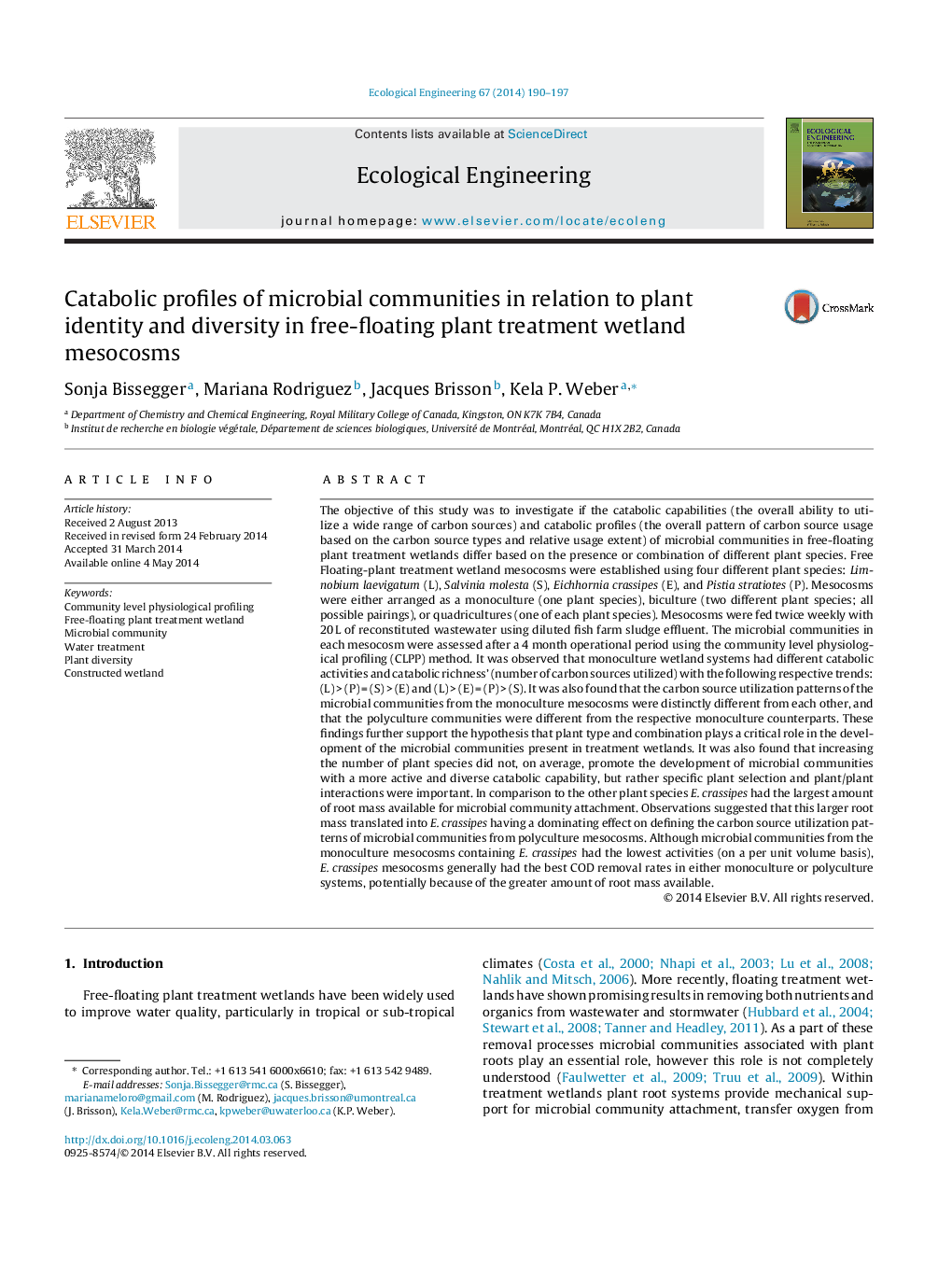| Article ID | Journal | Published Year | Pages | File Type |
|---|---|---|---|---|
| 4389430 | Ecological Engineering | 2014 | 8 Pages |
The objective of this study was to investigate if the catabolic capabilities (the overall ability to utilize a wide range of carbon sources) and catabolic profiles (the overall pattern of carbon source usage based on the carbon source types and relative usage extent) of microbial communities in free-floating plant treatment wetlands differ based on the presence or combination of different plant species. Free Floating-plant treatment wetland mesocosms were established using four different plant species: Limnobium laevigatum (L), Salvinia molesta (S), Eichhornia crassipes (E), and Pistia stratiotes (P). Mesocosms were either arranged as a monoculture (one plant species), biculture (two different plant species; all possible pairings), or quadricultures (one of each plant species). Mesocosms were fed twice weekly with 20 L of reconstituted wastewater using diluted fish farm sludge effluent. The microbial communities in each mesocosm were assessed after a 4 month operational period using the community level physiological profiling (CLPP) method. It was observed that monoculture wetland systems had different catabolic activities and catabolic richness’ (number of carbon sources utilized) with the following respective trends: (L) > (P) = (S) > (E) and (L) > (E) = (P) > (S). It was also found that the carbon source utilization patterns of the microbial communities from the monoculture mesocosms were distinctly different from each other, and that the polyculture communities were different from the respective monoculture counterparts. These findings further support the hypothesis that plant type and combination plays a critical role in the development of the microbial communities present in treatment wetlands. It was also found that increasing the number of plant species did not, on average, promote the development of microbial communities with a more active and diverse catabolic capability, but rather specific plant selection and plant/plant interactions were important. In comparison to the other plant species E. crassipes had the largest amount of root mass available for microbial community attachment. Observations suggested that this larger root mass translated into E. crassipes having a dominating effect on defining the carbon source utilization patterns of microbial communities from polyculture mesocosms. Although microbial communities from the monoculture mesocosms containing E. crassipes had the lowest activities (on a per unit volume basis), E. crassipes mesocosms generally had the best COD removal rates in either monoculture or polyculture systems, potentially because of the greater amount of root mass available.
